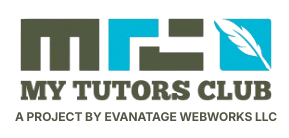- MBA FPX 5014 Assessment 1 Financial Condition Analysis
Executive Summary Table
| Action Step | Relevant Data | Resource Information |
| 1. Issue. | Hospital Acquired Infections (HAIs) pose a patient safety risk and have led to increased readmission rates | (Centers for Disease Control and Prevention, 2017) |
| 2. Regulatory Requirements. | In New York State, the Public Health Law 2819 was passed in 2005 which requires hospitals to report selected HAIs to the NYS Department of Health HAC Reduction Program links Medicare payments to quality in the inpatient hospital setting. The purpose of this program is to improve patient safety, implement best practices, and reduce rates of hospital acquired infections. | (Centers for Disease Control and Prevention, 2017) (CMS, 2020) (NYS Department of Health, 2021) |
| 3. Risk Management Implications. | Using antibiotics appropriately to treat infections Frequent and proper hand hygiene Compliance with sterile techniques when performing surgery or caring for wounds Proper cleaning and disinfection techniques | (Better Health, 2019) |
| 4. Environmental Assessment. | ECMC is a large urban hospital in Buffalo, NY that serves the entire Western New York (WNY) region. The Western New York (WNY) Buffalo area has a poverty rate of 30.3% and the majority of the population only makes between $20,000 and $30,000 per year Over half of ECMCs net patient revenue is | (ECMC, 2016) (Data USA, 2021) (Erie County Medical Center Corporation, 2014) |
1
| obtained through Medicare and Medicaid payments | ||
| 5. Resources to Address Issue. | Adhere to the guidelines set fourth by the Centers for Disease Control and Prevention (CDC) | |
| 6. Philosophy or Culture Statement. | ECMC’s mission is to provide every patient the highest quality of care delivered with compassion. Their vision is to be a leader in, and recognized for: superior clinical outcomes, high-quality family-centered care resulting in exceptional patient experiences, the hospital of choice for physicians, nurses, and staff, strong collaboration with community partners to improve access to healthcare, and academic affiliations that provide the best education for physicians, dentists, nurses, and other clinical staff. | (ECMC, 2016) |
| 7. Measurement and Monitoring. | National Nosocomial Infections Surveillance (NNIS) is a voluntary reporting system to monitor HAIs and guide prevention Using standard or universal precautions TAP Reports used to target, assess, and prevent HAIs | (CDC, 2000) (CDC, 2021) |
| 8. Organizational Improvement. | Employee education on preventing and reducing HAIs Reduce the rate for HAI of MRSA (Methicillin- Resistant Staphylococcus Aureus) | (Hospital Safety Grade, 2021) |
| 9. Ethics Considerations. | “Comply with all laws and regulations pertaining to healthcare management” (ACHE, n.d.) Failure to follow evidence-based practices to mitigate HAIS threatens patient safety. Studies have shown that up to 50% of all HAIs are preventable if effective prevention and control | (Gilbert, 2019) (ACHE, n.d.) |
2
| practices are followed |
References
ACHE. (n.d.). ACHE Code of Ethics. Retrieved from American College of Helathcare Executives: https://www.ache.org/about-ache/our-story/our-commitments/ethics/ache- code-of-ethics
Better Health. (2019, October 2). Preventing healthcare associated infection (HAI). Retrieved from Better Health Channel: https://www.betterhealth.vic.gov.au/health/conditionsandtreatments/infections-in- hospital-reduce-the-risk
CDC. (2000, March 3). Monitoring Hospital-Acquired Infections to Promote Patient Safety — United States, 1990–1999. Retrieved from Centers for Disease Control and Prevention: https://www.cdc.gov/mmwr/PDF/wk/mm4908.pdf
CDC. (2021, March 11). Targeted Assessment for Prevention (TAP). Retrieved from Centers for Disease Control and Prevention: https://www.cdc.gov/hai/prevent/tap.html
Centers for Disease Control and Prevention. (2017, December 14). Healthcare-Associated Infections (HAIs). Retrieved from CDC: https://www.cdc.gov/winnablebattles/report/hais.html
CMS. (2020, July 21). Hospital-Acquired Condition (HAC) Reduction Program. Retrieved from Centers for Medicare and Medicaid Services:
3
https://www.cms.gov/Medicare/Quality-Initiatives-Patient-Assessment- Instruments/Value-Based-Programs/HAC/Hospital-Acquired-Conditions
CMS. (2020, February 11). Hospital-Acquired Condition Reduction Program (HACRP).
Retrieved from Centers for Medicare and Medicaid Services: https://www.cms.gov/Medicare/Medicare-Fee-for-Service- Payment/AcuteInpatientPPS/HAC-Reduction-Program
Gilbert, G. (2019, April 2). The politics and ethics of hospital infection prevention and control: a qualitative case study of senior clinicians’ perceptions of professional and cultural factors that influence doctors’ attitudes and practices in a large Australian hospital.
Retrieved from BMC Health Services Research: https://bmchealthservres.biomedcentral.com/articles/10.1186/s12913-019-4044-y
Hospital Safet Grade. (2021, April 29). Infections. Retrieved from Leapfrog Hospital Safety Grade: https://www.hospitalsafetygrade.org/h/erie-county-medical-center
NYS Department of Health. (2021, June 24). Title: Section 405.11 – Infection control.
Retrieved from NYS DOH: https://regs.health.ny.gov/volume-c-title- 10/content/section-40511-infection-control




